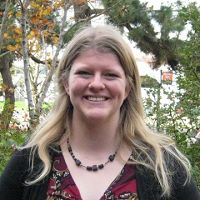Perdrial et al., 2013
Do fire disturbances account for missing C in snow dominated headwater catchments in NM?
Perdrial J.N., Brooks P.D., Swetnam T., Lohse K.A., Rasmussen C., Harpold A.A., Litvak M.E., Broxton P.D., Mitra B., Condon K., Huckle D.M., Vazquez A., Lybrand R.A., Holleran M., Orem C.A., Meixner T., Chorover J. (2013)
Abstract B33E-0531 presented at 2013 Fall Meeting, AGU, San Francisco, CA, 9-13 Dec. Cross-CZO
-
Catalina-Jemez, Luquillo, Reynolds, INVESTIGATOR
-
Catalina-Jemez, INVESTIGATOR
-
Catalina-Jemez, INVESTIGATOR
-
Reynolds, INVESTIGATOR
-
Catalina-Jemez, INVESTIGATOR
-
Boulder, Catalina-Jemez, INVESTIGATOR
-
Catalina-Jemez, INVESTIGATOR
-
Catalina-Jemez, STAFF, COLLABORATOR
-
Catalina-Jemez, GRAD STUDENT
-
Catalina-Jemez, GRAD STUDENT
-
Calhoun, Catalina-Jemez, COLLABORATOR
-
Catalina-Jemez, Shale Hills, GRAD STUDENT
-
Catalina-Jemez, GRAD STUDENT
-
Catalina-Jemez, INVESTIGATOR
-
Catalina-Jemez, INVESTIGATOR
Abstract
How do fires affect the potential for long term carbon (C) sequestration in the forests of western North America? We quantified current C fluxes (net ecosystem exchange [NEE] and dissolved & particulate stream and ground water fluxes) and pools (above and below ground biomass, [AGB, BGB], soil C) in three catchments of the Jemez River Basin Critical Zone Observatory. Our estimates revealed that study systems are dominated by gaseous fluxes (ranging from 3,200 to 3,900 kg ha-1 yr-1 over three years) with only small losses to streams as dissolved or particulate C (5 to 30 kg ha-1 yr-1) or to GW (1-6 kg ha-1 yr-1) rendering these systems substantial sinks for atmospheric C. Our estimates for biomass (20,000 – 240,000 kg ha-1) and soil C (80.000 and 160.000 kg ha-1) are comparable to stocks of similar soil and vegetation types (Lal 2005; North et al. 2009) and at current uptake rates only ~ 50-100 years are necessary for accumulation. Since old soil C accumulated over a longer period of time, current uptake rates are either higher than past ones and/or disturbances reduced the stocks in the past. Logging is documented in these systems but cannot explain the bulk of unaccounted C. Wildfires in contrast have occurred repeatedly in the past and impacted the C budget by reducing stocks (e.g. ~ 8% of AGB, ) during each fire. Additionally, uptake rates after fire are reduced until vegetation regrowth, with microbial respiration and thus carbon loss dominating in the interim. Post-fire debris flows (estimate 800 - 1140 kg C ha-1 after a recent fire in NM) present an additional sink. Together, our results are used to test the hypothesis that recurring wildfires strongly impact the C-balance of seasonally snow-covered forests in the SW US leading to oscillation between sources and sinks for C. Lal R (2005). Forest Ecol Manag 220 (1–3):242-258. North M, Hurteau M, Innes J (2009). Ecol Appl 19 (6):1385-1396.
Citation
Perdrial J.N., Brooks P.D., Swetnam T., Lohse K.A., Rasmussen C., Harpold A.A., Litvak M.E., Broxton P.D., Mitra B., Condon K., Huckle D.M., Vazquez A., Lybrand R.A., Holleran M., Orem C.A., Meixner T., Chorover J. (2013): Do fire disturbances account for missing C in snow dominated headwater catchments in NM?. Abstract B33E-0531 presented at 2013 Fall Meeting, AGU, San Francisco, CA, 9-13 Dec..
 This Paper/Book acknowledges NSF CZO grant support.
This Paper/Book acknowledges NSF CZO grant support.
Explore Further















